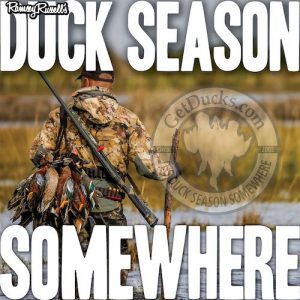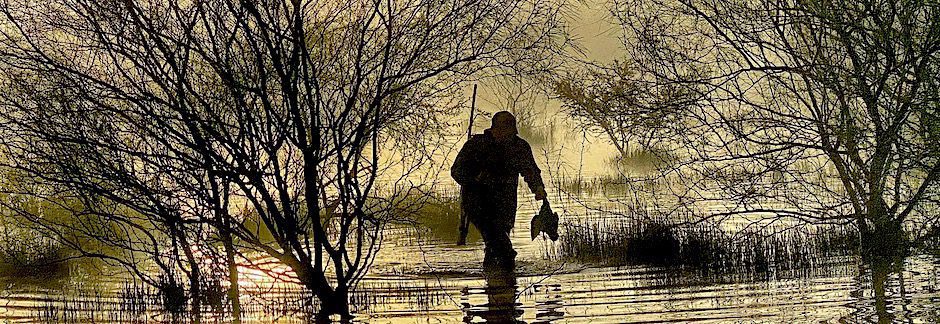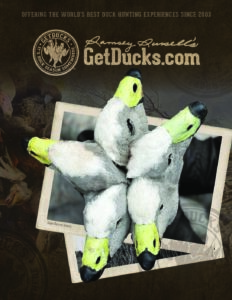MOJO’S Duck Season Somewhere Podcast
EP 360. Hunting in the Big Apple—R.A.T.S.

“No one in Manhattan is ever further than 30 feet from a rat,” explains Richard Reynolds, a long-time associate of the Ryders Alley Trencher-fed Society, or R.A.T.S. for short. And in New York City’s legendary rat abundance, Reynolds and associates find huge recreational opportunities–hunting Norwegian rats with savvy 8-dog packs. Reynolds colorfully describes how and where rats are hunted, strategies, rat characteristics and habitat, dog breeds and, associated perils– like why first-timers should definitely duct-tape their pants! Something to talk about next time a mouse scurries across your camp kitchen or duck blind, y’all don’t dare want to miss this unique hunting adventure episode. The willies alone are worth it!
EP 359. Collector of Untamed Stories

Ridr Knowelton grew up in New York’s Catskill Mountains, cutting his teeth on small game like the rest of us. He’s since spent the past 30 years fishing and hunting around the world. Interestingly, it isn’t so much critters hunted that he most remembers but hunting guides–and especially their stories. Today he shares stories about a harrowing arctic rescue mission during a whiteout blizzard that lead to marriage, mules dancing in local saloons, growing up in yesteryear Everglades and much more. You don’t want to miss this great episode about “collecting!”
EP 358. The Infamous “Jerry Lee” and Other Local Legends

Dave Gaston Custom Calls’ origin is a winds-like-a-snake duck hunting story that begins with western Alabama childhood, meanders through memorable friendships while chasing ducks in Mississippi and Arkansas, finds him apprenticing under one of Arkansas’s most legendary call makers, and leaves him at home right where it all began. Only nowadays he spends his time carrying on on the tradition; turning duck calls as a tribute, in part, to those great people now passed. That and telling damned good stories like only Gaston can about the infamous “Jerry Lee” and other local legends. Enjoy!
EP 357. Waterfowl of the World Stories and Perspectives

Renown waterfowl photographer Gary Kramer is back with lots of amazing new stories gleaned while putting together his legendary Waterfowl of the World and beyond. He takes us ’round-the-world, covering recent bucket-list trips like Antartica penguin watching and Greenland king eider hunting, as well as photo safariing India wild tigers, Morocco red-crested pochards and ever-elusive masked ducks. Bringing it home, he describes balancing photographing with shotgunning and how both have shaped his understanding of waterfowl.
EP 356. An End to Duck Hunting Down Under? Why Should We Care?

Nearly 9,500 miles away from the US, the heated battle between Australian duck hunters and anti-hunters has hit a fevered pitch. Sustainable duck hunting for future generations seems dire. Providing an update from the front lines, my long-time Australian duck hunting associates, Glenn Falla and Trent Leen, describe what’s going on, why the ongoing season is a critical juncture, and how antis have forsaken science-based waterfowl conservation practices and funding to serve an emotionally fueled agenda. Is this finally the end of Australia duck hunting? And why should US hunters care? Safari Club International’s Ben Cassidy and Delta Waterfowl’s Joel Brice weigh in, offering an all-for-one and one-for-all perspective.
EP 365. The Call Collector

“Times have changed and I’d not be able to do it again,” says Ryan Graves in speaking of his impressive antique duck call and duck hunting memorabilia collection. What started as a childhood hobby buying duck calls–because they were cheap–has grown up into an expertise that takes him neck deep into waterfowl’s nostalgic past, and throughout modern-day United States with other call collecting associates. He gives Ramsey a tour of his collection–and a glimpse into the stories that collection represents–in today’s episode.
EP 355. Just Buy the Damned Trip Insurance!

Here’s the deal: You plan the absolute hunt-of-a-lifetime many months in a advance and then–BAM–when you least expect it, expect it. Life happens! Your long-awaited hunting trip is interupted, cancelled or worse. Now what? After 20-plus years organizing hunts worldwide, we’ve seen it all. Global Rescue’s Justin Walker and Ramsey discuss sticky and unfortunate clients experiences they’ve seen over the years, discussing best and most affordable options for anyone hunting anything, anywhere. Whether hunting a couple states over or traveling internationally, learn how to smartly protect your hard-earned monies spent on hunting trips.
EP 354. Bird Hunters, Bird Dogs, and Bygone Days

“There’s hardly been a day in my life I’ve not owned a bird dog,” says 100-years-old Garrett Lockee while telling about chasing wild quail for most of his life. The National Bird Dog Museum in Grand Junction, Tennessee, became his tribute to yesteryear bird hunters and the beloved bird dogs that define a bygone American era. Describing in colorful detail stories about his family, fondest memories and favorite dogs, Lockee characterizes perfectly the heyday of American quail hunting, how and why times have since changed.
__________
The National Bird Dog Museum is dedicated to the preservation and perpetuation of bird dog, field trial, and hunting traditions.
National Bird Dog Museum https://www.birddogfoundation.com
__________
EP 353. Duck Hunting in the New World

Waterfowl historian Dr. Wayne Capooth describes duck hunting in America way back in the 1600-1700s when the first colonists arrived to a real-life Garden of Eden. Describing their growing pains, how they hunted, what they hunted with and how natives taught them to hunt better, we end up discussing hunting George Washington’s duck hunting experiences and other famous duck hunting US presidents.
__________
Wayne Capooth’s Historic Duck Hunting Stories Podcast https://podcasts.apple.com/us/podcast/historic-duck-hunting-stories-the-golden-age-of/id1660685324
__________
EP 352. How Does Hunting Pressure Affect Duck Hunting Success? Or Does It?

How does pressure affect duck hunting success? Or does it? Is it just the shooting, or do other related disturbance factors affect hunting success? How do ducks respond to hunting pressure? And what about busting out refuges — or changing sanctuary areas up to ensure ducks fly over our decoys instead? Dr. Bradley Cohen is back to explain the complex relationship between hunters, hunting pressure and waterfowl behavior, offering research-based suggestions for how we can mitigate disturbing “our ducks,” possibly increasing number of ducks hanging from our straps. Fascinating topic you’ll definitely want to hear!
__________
Cohen Wildlife Research Lab conducts applied research to understand how habitat management and landscape conditions affect wildlife populations. https://www.cohenwildlifelab.com








